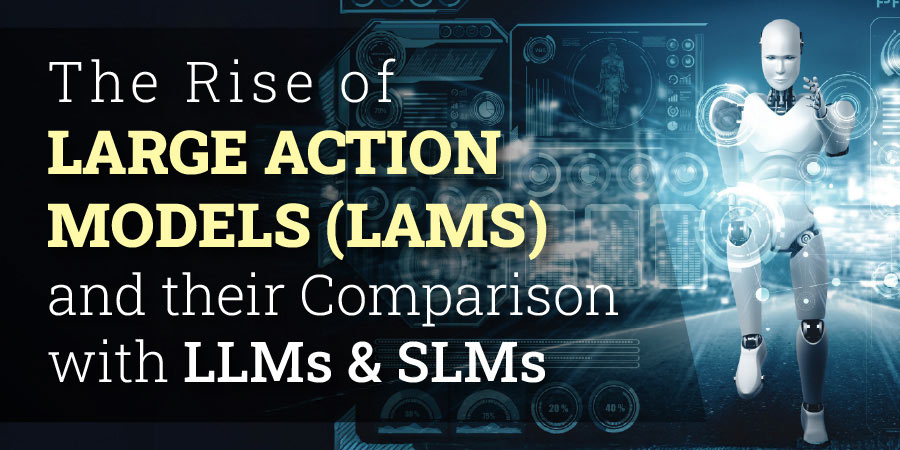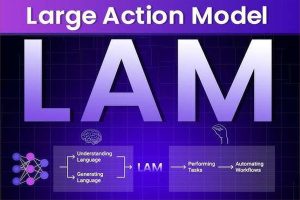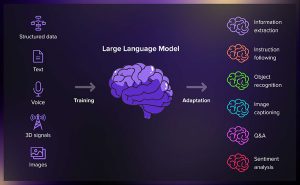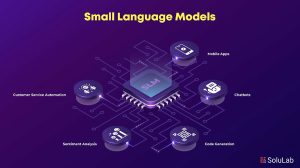The Rise of Large Action Models (LAMs) and their Comparison with LLMs & SLMs

Introduction
Artificial Intelligence has come a long way, hasn’t it? From simple rule-based automation to the mighty Large Language Models (LLMs) that can write essays, answer complex queries, and even generate creative stories, we’ve seen AI evolve astonishingly.
But here’s the thing—AI is still largely reactive. It processes input and generates responses, but it doesn’t necessarily do things in the real world. That’s where Large Action Models (LAMs) come into the picture.
A model that can not only tell you how to deploy an application but actually deploys it for you. That’s what LAMs are all about!
In this blog, we’ll dive deep into what LAMs are, how they compare with LLMs and Small Language Models (SLMs), and why they might be the missing piece in the AI revolution.
What Exactly Are Large Action Models (LAMs)?
Most AI models we interact with today—be it ChatGPT, Google Bard, or Claude—are based on Large Language Models (LLMs). These models are text-focused—they process and generate text but don’t really execute actions.
LAMs, on the other hand, are action-focused. Instead of just responding with information, they perform actual tasks based on commands. Think of them as AI agents that don’t just talk about doing something but actually go ahead and do it.
 Fig.1.1: Large Action Model
Fig.1.1: Large Action Model
Breaking It Down: What Makes LAMs Special?
LAMs are built with a few key superpowers:
- They execute real-world actions.
Example: You tell a LAM, “Book me a flight to New York next Friday.” Instead of just suggesting flights, it actually books the flight for you!
- They can handle multi-step tasks.
Example: You need to deploy a website. A LAM can:
1. Write the code
2. Set up the server
3. Configure the database
4. Deploy the site—all without human intervention. - They adapt based on real-time feedback.
If a LAM is controlling a robotic arm and something goes wrong, it won’t just stop; it will adjust its actions in real time to complete the task correctly.
- They integrate with external tools.
Unlike LLMs, which just generate text, LAMs interact with APIs, databases, software systems, and even hardware.
A Simple Example of a LAM in Action
Imagine you’re running an online store, and you get thousands of customer queries every day. Instead of manually replying to customers, you use a chatbot powered by an LLM. But what if the chatbot could go beyond just answering queries?
With a LAM, your AI assistant could:
- Read a customer request (“I want to return my order”)
- Generate a return label
- Process the refund automatically
- Send a confirmation email to the customer
This isn’t just responding—it’s doing.
Comparing LAMs, LLMs, and SLMs
Now that we understand LAMs, let’s compare them with Large Language Models (LLMs) and Small Language Models (SLMs).
Large Language Models (LLMs): The Masters of Text
What They Do: Generate text, summarize documents, translate languages, and answer questions.
Examples: GPT-4, Claude, LLaMA, BERT
Where They Shine:
- Writing essays, summarizing books, answering complex
- Chatbots, virtual assistants, customer
- Code generation, content creation, SEO optimization.
Where They Struggle:
- Can’t take actions beyond text
- Computationally expensive (requires massive GPU power).
- Prone to biases from training
 Fig.1.2: Large Language Model
Fig.1.2: Large Language Model
Small Language Models (SLMs): Lightweight but Limited
What They Do: Offer faster and more efficient natural language processing with lower computational costs.
Examples: DistilBERT, TinyBERT, GPT-2 (small versions)
Where They Shine:
- Work well on edge devices and mobile apps.
- Faster responses with lower energy consumption.
- Ideal for chatbots, quick text analysis, and simple applications.
Where They Struggle:
- Can’t perform complex reasoning like LLMs.
- Have smaller knowledge bases.
- Require frequent fine-tuning for new tasks.
 Fig.1.3: Small Language Model
Fig.1.3: Small Language Model
Large Action Models (LAMs): The Doers of AI
What They Do: Actually perform tasks rather than just responding to queries.
Examples: AutoGPT, OpenAI Codex (for coding automation), AI-powered RPA bots.
Where They Shine:
- Automating workflows, robotic control, business process automation.
- Taking multi-step actions with real-world effects.
- Real-time feedback and dynamic adjustments.
Where They Struggle:
- Higher complexity—need integration with external tools.
- Data security risks—since they interact with external systems.
- Error handling is crucial to prevent unintended actions.
Comparison Table: LLMs vs. SLMs vs. LAMs
| Feature | LLMs (Large Language Models) | SLMs (Small Language Models) | LAMs (Large Action Models) |
| Primary Focus | Understanding & generating text | Lightweight text processing | Executing real-world tasks |
| Computational Cost | High | Low | High |
| Use Cases | Writing, Q&A, chatbots, translation | Mobile apps, chatbots | Automation, robotics, coding assistants |
| Multi-Step Execution | Moderate | Low | High |
| Integration with External Systems | Limited | Limited | Extensive |
| Best for | Content generation | Quick NLP tasks | Automated workflows, real-world action |
Final Thoughts: Why LAMs Matter
If LLMs are the brains of AI, and SLMs are the lightweight versions, then LAMs are the hands—they actually do the work.
As AI continues to evolve, we’re moving towards a future where machines don’t just help us think but actually help us act. Imagine AI systems that can:
- Write and execute their own code
- Manage entire business operations
- Control physical devices and robots
LAMs are the bridge between artificial intelligence and real-world automation. They have the potential to reshape industries by turning static AI into dynamic, action-driven systems.
The question is—are we ready for AI that doesn’t just think but acts?
What Do You Think?
Are LAMs the future? Do they excite you, or do they raise concerns about automation risks? Let’s discuss in the comments!
References
- 2023. “Large Language Models (LLMs): A Brief History, Applications & Challenges.” Medium. https://blog.gopenai.com/large-language-models-llms-a-brief-historyapplications-challenges-c2fab10fa2e7 (February 18, 2025).
- “Small Language Models (SLM) vs LLM – What You Need to Know.” https://solulab.com/small-language-models/ (February 18, 2025).
AUTHORS

Sonika
Academic Year 2024-25


